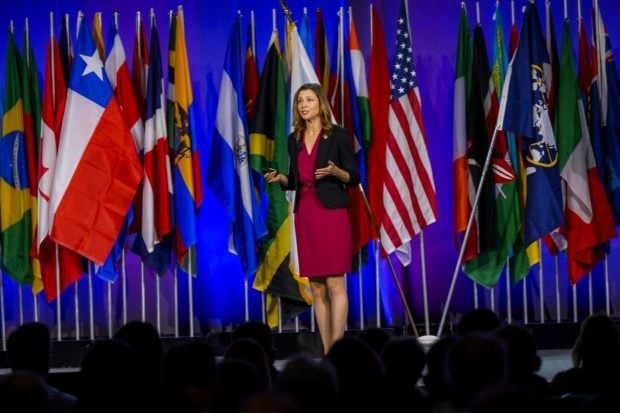LAS VEGAS — Who owns the customer? The customer owns the customer, said Kausik Rajgopal, a McKinsey partner and a panelist at BAI Payments Connect 2012, the annual trade show that aims to bring together payments innovators with financial institutions.
Kausik ominously added, "Mobile is potentially a way to disintermediate financial institutions. From Amazon to Square, there is an intent to directly serve your customers."
Substitute "members" for "customers," and the warning holds up just as plainly. Plenty of players with cash and technology want to cut financial institutions out of many transactions.
Recommended For You
And the worry for financial institutions, he and other BAI speakers suggested, is relegation to the unwanted status of a utility. Mike Kennedy, an executive vice president at Wells Fargo who appeared on the same "Successful Innovation" panel with Kausik, said, "We don't want to end up in the background as another utility."
In his mind, the way to escape that is to build relationships. "It's about personalization. Customers want customization," and, ironic it may seem, at a time when more interactions are digital, a countervailing desire is for more individuality, more recognition of users as unique people, he said.
David Godsman, a senior executive at Bank of America who served as the opening keynoter, stressed the same themes. "Today the customer is in control, and solutions have to be flexible."
He added the apparent paradox. "High tech is higher touch." That is, the right computer-driven tools learn so much about their users, they deliver personalization that may reach higher levels than those achieved by in-person tellers and branch banking executives.
Consumers want to feel empowered and, today, with substantial social media tools at their disposal, they in fact have enormous power. "Empowerment," said Godsman, "is this presentation's most powerful word."
From where Godsman sits, two conclusions jump at him. "There are no clear winners in the emerging payments space" and "placing multiple bets is a reality. You need a flexible strategy."
Consumer want what they want, and an era when a financial institution could attempt to force fit the solutions it preferred is over. Now it comes down to listening hard and striving to stay relevant, he said.
And that becomes all the more pressing because so many nonbanks, from Walmart to Apple, are circling around the fringes of financial transactions with ever heightening interest in cherry picking the ones that are most attractive.
"New market entrants are changing the game for all of us," stressed Godsman.
He asked a provocative question. "What will be the next differentiator for financial institutions?" That is, the ones that win will do so how? Godsman offered no succinct prescription. But he did say, "Move quickly."
© 2025 ALM Global, LLC, All Rights Reserved. Request academic re-use from www.copyright.com. All other uses, submit a request to [email protected]. For more information visit Asset & Logo Licensing.







